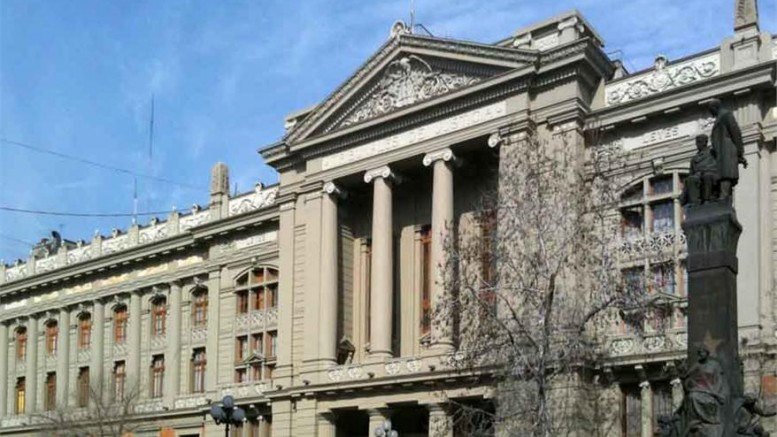Goldcorp (TSX: G; NYSE: GG) and New Gold (TSX: NGD; NYSE-MKT: NGD) are having an unlucky streak at their El Morro gold-copper project in northern Chile, where local officials have temporarily suspended development for the third time in three years.
Most recently, Chile’s Supreme Court has ruled that the project’s environmental permit, previously approved in October 2013, requires consultation with indigenous groups. As a result, it has stopped the permit.
This overturned the Copiapo Court of Appeals’ decision in April to dismiss a challenge by the indigenous Diaguita communities, alleging Goldcorp did not consult with them.
According to recent Chilean government data, there are 22 organized Diaguita communities in Huasco province in the Atacama region, where El Morro sits at an altitude of 4,000 metres, 80 km east of the city of Vallenar.
El Morro, estimated to cost US$3.9 billion, should take five years to build. Goldcorp owns 70% of the 36 sq. km project and New Gold has a 30% carried interest, meaning it doesn’t have to pitch in with the development costs.
“Goldcorp, as the developer of El Morro, is reviewing the Supreme Court ruling to determine the next steps in advancing the permitting for the project,” Julie Taylor, New Gold’s director of investor relations, said in an email.
“Goldcorp and New Gold remain committed to open and transparent dialogue with our stakeholders and to responsible practices in accordance with the highest applicable health, safety and environmental standards,” she adds.
Desjardin analyst Michael Parkin, who covers New Gold, describes the suspension as “slightly negative.”
“If Goldcorp does not build the project, it is required to make penalty payments of US$1.5 million per month [for two years],” he writes. The penalty will kick in once all permits are in place. However, Parkin doesn’t believe Goldcorp will go ahead with the development in the current gold price environment.
BMO analyst David Haughton, who covers Goldcorp, believes the majority owner will not go ahead with El Morro and ascribes no value to the project. He has an “outperform” and US$35 target on the stock.
Goldcorp, which has spent US$238 million on the project to date, may need to reconsider its investment strategy in Chile, where it owns only the El Morro project.
This third suspension follows a halt in November 2013 after the Diaguita challenged the project’s environmental permit in the Copiapo court of appeals, arguing the development would damage their lands and water sources.
As a result, Goldcorp stopped field activities until the lower court decided on the matter, with the ruling falling in favour of the miner.
Earlier in April 2012, the Supreme Court revoked the project’s environmental permit until the Chilean environmental permitting authority “corrected some deficiencies” in the approval process that were brought to the attention of the Antofagasta court of appeals by the indigenous groups.
In October 2013, Goldcorp and the authorities addressed the shortfalls, and the Environmental Assessment Commission of Atacama reinstated El Morro’s environmental permit.
This year, Goldcorp appears to be back to where it was two years ago, facing ongoing opposition by the Diaguita.
A handful of Diaguita communities took legal action last year against Barrick Gold’s (TSX: ABX; NYSE: ABX) nearby US$8.5-billion Pascua-Lama gold-silver project, where they argued development would damage glaciers and contaminate water supplies.
Construction of the high-priced project, straddling the Argentina-Chile border, is on hold until Barrick completes its environmental commitments — including building a wastewater management system — and until gold prices improve.
In May, Barrick signed a memorandum of understanding with 12 Diaguita indigenous communities and three Diaguita associations in Huasco province, which is the first step in solving one of the several problems at Pascua-Lama. Under the agreement, Barrick will share technical and environmental information about the project with the communities.
Barrick’s progress with the Diaguita provides some hope for a resolution at El Morro.


Be the first to comment on "Chilean court suspends El Morro project, again"